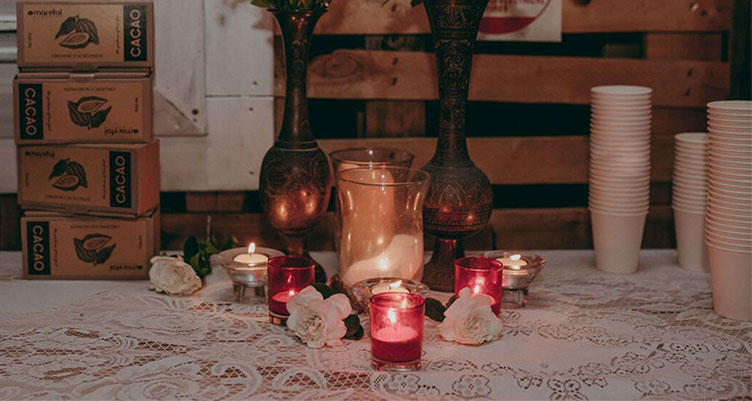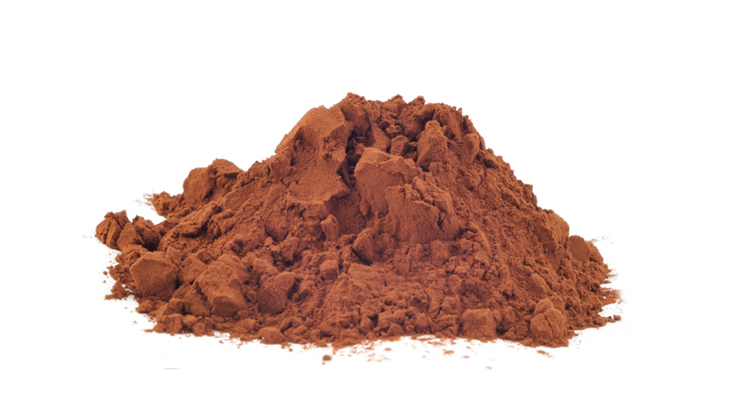What is Ceremonial Cacao?

US Montezuma’s Mexican Restaurant Launches Margaritas with Dark Agave Nectar
14/09/2018
Growing Sacha Inchi benefits both consumers and growers.
20/06/2019About the Sacred Origin of Cacao
Before its widespread use as an ingredient for making modern chocolate, Cacao has been considered a sacred plant in ancient Mesoamerican civilizations. Cacao represents one of the main Gods in ancient Nauha, Mayan and Olmec and Inca civilizations. Cacao was a central element in religious and spiritual rituals of these and other ancient Mesoamerican civilizations.
In these ceremonies, a pure form of cacao was used – cacao paste – which is obtained by grinding the cacao beans into a paste and then mixing with hot water. This beverage could be spiced with cinnamon, chili, pepper and other spices.[1]
Pure cacao is high in antioxidants and minerals such as iron, magnesium, calcium and also contains a type of stimulant called Theobromine. No wonder this beverage was given to Aztec warriors before a battle or to contendants in the Sacred Ball Game, where players had to put a natural rubber heavy ball through a stone hoop using only their hips [2]. This game went on for long hours nonstop and the winner earned the honour to be sacrificed to the Gods. Not everyone was allowed to drink the sacred beverage. It was used only by Priests and the Noble cast in special occasions such as weddings and religious ceremonies.
Cacao Ceremonies Present Times
En los últimos años, las ceremonias de cacao se han vuelto comunes en Australia y en otros países occidentales. Las ceremonias de cacao modernas agregan elementos de los rituales Mesoamericanos así como meditaciones de sanación chamánicas.
“Shamanic healing is one of the oldest holistic healing practices which has been used by ancient cultures worldwide for centuries”.[3]
“Many cacao ceremonies will involve a group of people sitting in a sacred circle, taking prayer, and setting intentions to be received. Each person shares what they want to let go of, and what they are calling into their hearts. This often involves opening up to complete strangers in the circle, and creates a safe and intimate space where everyone’s fears, hopes, sufferings, and dreams can be shared.
What we often find is that most of us humans have very similar problems and fears, as well as hopes for our lives. This means that the people in the circle act as a mirror for each other.
The ceremony ends in dance, which allows the cacao to activate within the heart and body, and create transformation. Through opening the heart, cacao enables us to hear our true self, work through blockages and past traumas, dissolve any pent up negative energy, and help us align with who we truly are.”[3]
What is Ceremonial Grade Cacao?
Given the spiritual nature of the cacao shamanic ceremonies, the cacao used needs to be a pure form of unadulterated cacao, sourced from the Mesoamerican region.
Maretai Organics founders, Sara and Paolo Grossi, have been importing to Australia cacao from native Mesoamerican regions and establishing a close relationship with growers who use sustainable agricultural practices agriculture and are certified by fair commerce and social development programs.
A long time relationship of Sara and Paolo [6] with Jemma Gawned from Anchoring the Light and Soul Sister Circle [4] [5], has created a wonderful synergy promoting the Criollo cacao from Peru, Mexico and Ecuador. This cacao has no additives, and it is a very high quality cacao used in Cacao Ceremonies.
In conclusion, ceremonial grade cacao should meet the below:
- Cacao should be grown using sustainable farming practices and promoting favorable life conditions for farmers and their families. Being a sacred plant, the spiritual energy of the bean starts with the cultivation of the pod and positive energy present from the cacao plant to the final product to be used at a ceremony.
- The cacao paste used to make the sacred beverage should be in its pure form. This means no additives, preservatives should be present.
- Country of origin should be in the geographical area of the ancient Mesoamerican civilizations (i.e. Peru, Ecuador, Mexico)
- Also the cacao should be preferably Criollo Cacao being one of the original varieties used by Mesoamerican cultures.
Ceremonial cacao paste can be purchased in Australia through Maretai Organics online store.
Reference Links
[1] Maretai Organics Youtube Channel – What is the Difference between Cacao and Cocoa
[2] Wilkipedia – Mesoamerican Ball Game
[3] Shani Jay Sacred Cacao Ceremonies – How to They Can Heal Your Life & Open Your Heart
[4] Anchoring The Light – Ancient Wisdome for a Modern Age
[6] Maretai Organics – Nosotros
[7] Maretai Organics – Organic Cacao Paste – Ceremonial Grade




